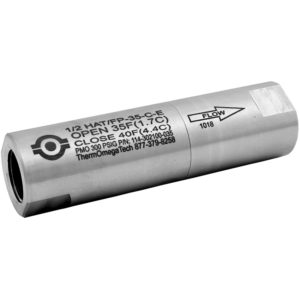 Freeze protection valves are effective in preventing freeze damage in process lines. Unlike steam or electric tracing, which require power and can cause water to overheat, freeze protection valves operate by simply draining or bleeding water as the temperature approaches freezing.
Freeze protection valves are effective in preventing freeze damage in process lines. Unlike steam or electric tracing, which require power and can cause water to overheat, freeze protection valves operate by simply draining or bleeding water as the temperature approaches freezing.
This prevents the formation of ice that can clog lines, shut off the flow, and cause pressure within the line to build, cracking pipes, valves, and fittings and damaging equipment. Damage due to ice formation can incur costs for replacement parts and labor and reduce productivity due to shutdowns.
Nonetheless, freeze protection valves do not necessarily completely prevent the formation of ice. In some cases, ice may still form as a layer on the inside of a pipe. This acts as a good insulator, reducing further heat loss to the cold outside air. Also, no damage will occur if the ice does not completely block the pipe or equipment flow area.
Damage due to freezing is caused when a pipe or flow passage in equipment is completely blocked. Then, as additional ice forms, the expansion associated with the ice formation compresses the water and causes a dramatic increase in the internal pressure in the line. When the pressure exceeds the pipe’s or housing’s strength, these will break.
Learn more about ThermOmegaTech Freeze Protection ValvesValves vs. Tracing
When to Use Tracing
Tracing is required when the temperature to be maintained is above the resupply water temperature; that is when additional heat input is required. Use tracing if the complexity of the equipment layout makes it difficult or impossible to bleed or drain the system properly. Also, tracing should be used if the discharge from bleeder or drain valves presents a handling problem. This may be the case in plant areas where all discharges must be controlled or reported or where discharge treatment problems and expenses outweigh the benefits of bleeder/drain valves.
When to Use Valves
Valves are generally more economical to install and operate than tracing. Use valves in remote plant areas where steam or electricity are not available and the cost to provide them is high. Also, use valves when potential overheating from tracing is a problem. In critical applications, where power failures will cut off electric or steam tracing, select self-operating valves as the primary or backup freeze protection system.
Click to read more about how Freeze Protection Valves Keep Lines Flowing.
